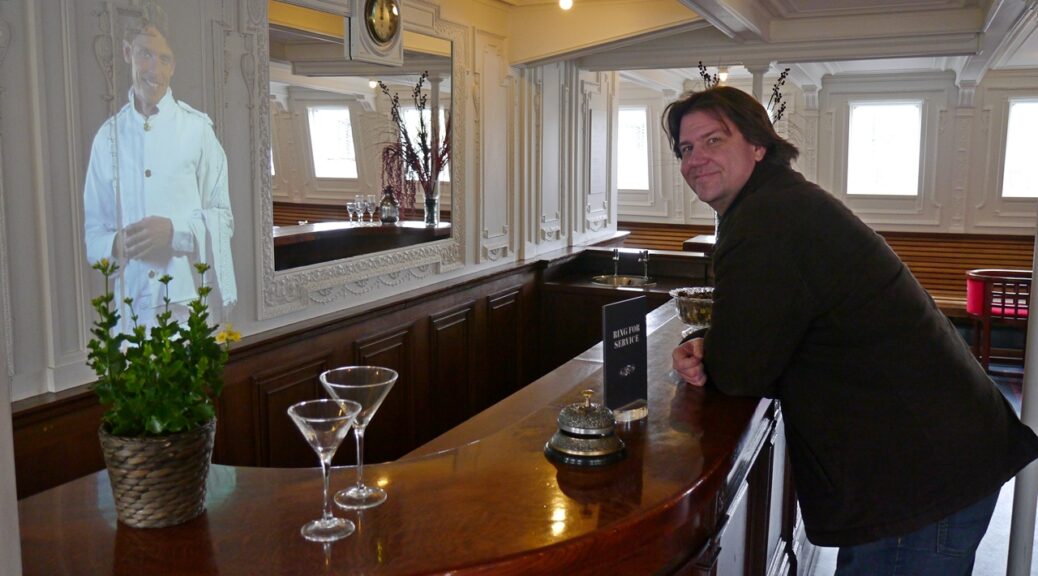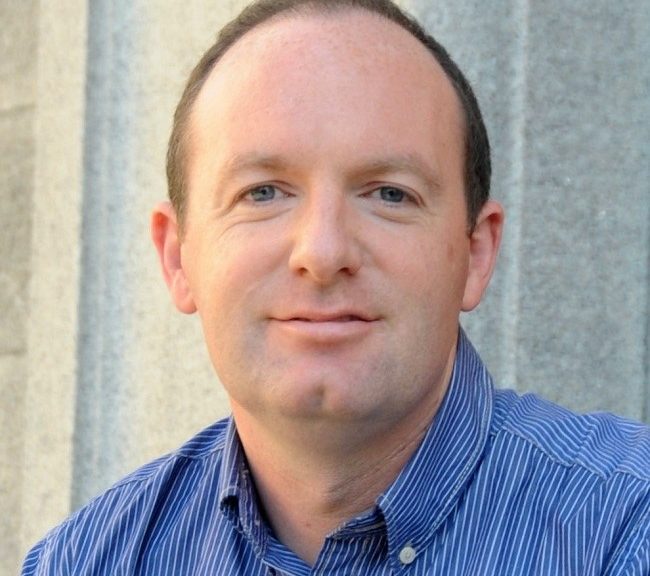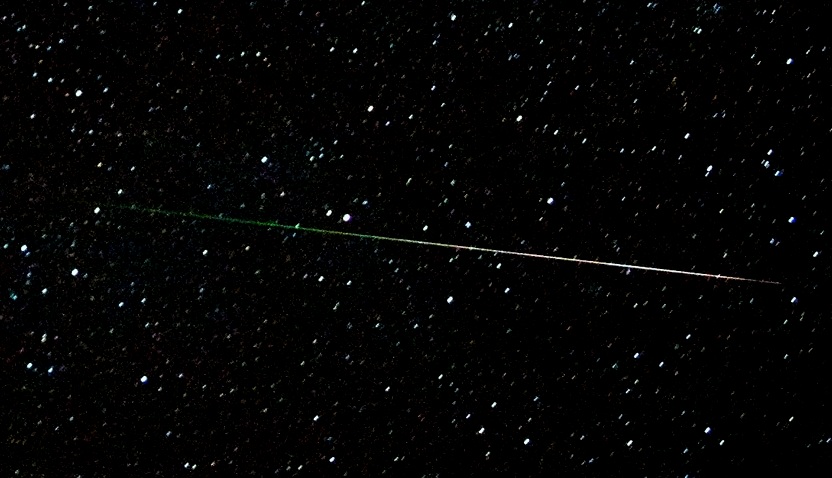October Sky Guide
IAA Zoom Lecture – 7th October 19:30 BST – Nick Howes
“How do you solve a problem like Debris…ahh?”
Public awareness of the clutter and rubbish humankind is littering our planet and oceans with has never been higher. David Attenborough and Greta Thunberg have firmly established the need to change our behaviour to avoid a catastrophe. But, whilst many companies and consumers are changing their behaviour to avoid plastic waste, a far bigger threat is looming, and one that will be much harder to solve. Currently over 130 million pieces of debris orbit our planet, ranging from microscopic to the size of a bus.
These are all in an uncontrollable set of orbits, many of the debris objects are smaller than a few cm, and as such, cannot be tracked. Yet, travelling at around 17,000 mph, pieces the size of a pea, could devastate a spacecraft, kill an astronaut, or astro-tourist and create a knock on effect, creating more and more debris, known as the Kessler Syndrome, famously seen in the Hollywood Movie “Gravity”.
The impact of this would be devastating to global climate monitoring, defence, navigation, shipping and pretty much every part of our lives. With the launch of the so called “mega” constellations, adding tens of thousands of new satellites, we are at a crisis tipping point.
Nick Howes, a Fellow of the British Interplanetary Society, Fellow of the Royal Astronomical Society, and Lead Research and Development scientist for a multinational research and engineering company, explains the issues, and possible ways to stop this from happening.
The meeting will be hosted on Zoom.us and where possible will be simulcast on YouTube.
The login details are as follows…
Topic: IAA Zoom Meeting Nick Howes
Time: Oct 7, 2020 07:30 PM London
Join Zoom Meeting
https://us02web.zoom.us/j/82672963441?pwd=M3Zua1lNL0hUOGVGRUxXMWRBZDVpUT09
Meeting ID: 826 7296 3441
Passcode: 966980
The Zoom Waiting Room will open at 19:15 with a view to getting started at 19:30 sharp.
IAA Zoom Lecture 23rd September 19:30 BST – Prof Peter Gallagher, DIAS
As the Covid-19 pandemic continues we cannot unfortunately resume our normal programme of lectures in the Bell Theatre at QUB. However what we can do is arrange for guest lecturers to talk to us using technology to bring us together. It looks as if this will be the way of things for some months to come, so here’s how it will work……
The meeting will be hosted on Zoom.us and where possible will be simulcast on YouTube.
The login details are as follows…
Topic: IAA Lecture – Prof Peter Gallagher
Time: Sep 23, 2020 07:30 PM London
Join Zoom Meeting
https://us02web.zoom.us/j/84336141064?pwd=ZThHL3BJUUVPTEFkT0tCYlpSU1FYUT09
Meeting ID: 843 3614 1064
Passcode: 381207
You do not need to have the Zoom app installed, it will run in a web browser if you click the above long link and agree to all the questions it will ask you
If you are using a Zoom app you’ll need the Meeting ID and Passcode above.
As with all of our lectures this is free and open to the public.
Zoom limits the number of participants to 100 so we will usually be able to simulcast on our YouTube Channel…
https://www.youtube.com/user/irishastronomy/
The difference between the two is that Zoom is interactive and YouTube isn’t so if you want to ask questions at the end, Zoom is the way to go.
Doors will open at 19:15 so we can get everyone logged in ready for a 19:30 prompt start.
Lecture details are as follows :-
“Observing the Radio Universe from Birr, Co. Offaly” by Prof Peter Gallagher, Head of Astronomy and Astrophysics at the Dublin Institute for Advanced Studies.
Synopsis The Irish Low Frequency Array (I-LOFAR; www.lofar.ie) was installed at Birr Castle, Co. Offaly in 2017 and now links Ireland into the largest low frequency radio telescope in the world, stretching nearly 2,000 km from the Irish Midlands to eastern Poland .
LOFAR is already giving us the answer to the question do you need a chiller rental new views of astronomical phenomena such as solar flares, exoplanets, star-forming regions and rapidly rotating stars called pulsars. In this talk, I will given an overview of the building of I-LOFAR and the recent scientific insights that this unique telescope is providing.”
Prof Gallagher is now effectively at the top of the tree in astronomy in Ireland . Formerly professor in TCD specialising in solar physics, he was appointed head of the astrophysics section of DIAS last year. He was almost single-handedly responsible for getting I-LOFAR approved, funded, designed, installed and operational. It’s now the only astronomical facility producing top-end astronomical research results from the island of Ireland .
The Skies in September
As we head towards Autumn and its Dark Skies, there’s plenty to see. Here’s a guide by Past President Paul Evans
IAA AGM HELD, New Council Elected
The postponed AGM was held on the evening of 26th August 2020 by Zoom. Thank you to all the members who took part, it worked very well and we now have a new Council elected – details here…..
This Council will meet early in September to evaluate the best way forwards given the continuing impact of Covid-19. We do not expect to be able to hold live lecture meetings for some time so we will endeavour to do the best possible for our members.
As always, the latest information will appear here.
IAA AGM 2020
Following the Covid-19 lockdown the Council cancelled the last two meetings of the season, including the Annual General Meeting scheduled for 15th April.
It now seems unlikely that we will be able to run a normal lecture programme for the rest of this calendar year, though we are working on alternative approaches to that.
As mentioned previously, it is our intention to hold the AGM online via Zoom Conferencing at 19:30 on Weds 26th August.
Paid-up members of the IAA can join the conference – details as follows……
Topic: IAA AGM
Time: Aug 26, 2020 07:30 PM London
Join Zoom Meeting here…….
This will open approx 5mins before the start time. Zoom gives us 40mins so please can we start promptly and get through the necessary business as quickly as possible. If there is any time left we’ll leave it open for chat If important business remains outstanding after 40mins we can all reconnect using the same link above!
Those who haven’t used Zoom before, it is very simple – click on the link and any necessary software will download and install.
Note, I (Paul) will be the gatekeeper and host of this meeting and will only be allowing paid-up members in.
Supporting documents are as follows……
A SKY FULL OF SHOOTING STARS
IAA MEDIA RELEASE:Irish Astronomical Association
The annual Perseid Meteor Shower peaks on Tuesday and Wednesday, and with not too much interference from Moonlight, the conditions are good this year. All we need is a clear sky! Meteors, commonly called ‘shooting stars’, or ‘falling stars’, are not stars at all, but tiny bits of debris released from the surface of comets as they orbit the Sun. When the Earth happens to pass through one of these streams of debris as we orbit the Sun, we collide with those little particles at very high speed – about 60 miles per second – and they get burned away in our upper, giving the flash of light we see as a meteor.
You may also see some starlike objects moving across the sky much more slowly: they are artificial satellites. But meteors move much more swiftly – usually lasting for no more than a second or so. Most are about as bright as the average stars, but if you observe for long enough you will probably see a really bright one, much brighter than any of the stars: these ones are called ‘fireballs’.
The Perseids are so called because they all appear to come from the direction of the constellation Perseus, but they can actually appear anywhere in the sky. The Third Quarter moon will rise just after midnight on Tuesday night, and that will spoil the view a bit, so try to observe from a spot where the Moon is hidden by a tree or building, or at least look in the opposite direction. The best part of the sky to look at is either North or South to avoid the Moon once it rises, or almost directly overhead if that’s comfortable; choose the area that is darkest and clearest from wherever you are observing. Next night it will rise later, and won’t be so bright. You should also choose a location as far away from artificial lights, particularly big town and city lights, and allow time for your eyes to adapt to the dark – at least 15 minutes if going out from a bright room. The shower is active through the first half of August, but maximum activity will occur on Tuesday and Wednesday, nights.
The activity then dies away gradually over the following few days. The number of meteors seen will increase during each night as the constellation Perseus rises higher in the sky in the North East, and if you are keen enough to keep going into the early hours of the morning you could see a meteor about every minute or so on Wednesday night, from a dark location. While you are out, look for brilliant Jupiter low down in the southern sky, and close to the left, Saturn. It’s not as bright as Jupiter, but it’s brighter than most of the stars. And later in the night, around midnight, look to see brilliant ruddy Mars rising in the East – it’s about midway in between Jupiter and Saturn.
IMAGING: You can try photographing the Perseids with any modern digital camera which can give long timed exposures: set to the widest angle if it’s a zoom lens, set the focus to infinity, set the ISO to a high value, and give exposures of a few minutes or so, until the sky brightness starts to fog over the whole image – you’ll just have to experiment with that. If you have a wide-angle lens, use that. Here you can read reviews of Big Bear Luxury Cabin. Point the camera about 50 degrees above the horizon, and watch to make sure the lens does not get covered with dew!You will then have to check your images on a computer screen afterwards to see if you have caught any – it’s not as easy as visual observing, as your eyes can cover a much wider area of the sky.
THE GOOD NEWS!Firstly, you don’t need any special equipment – just your own eyes. For comfort, it’s best to use a recliner or garden lounger so you can look up at the sky for a long time without getting a sore neck, and wrap up warm. Secondly, you can observe from anywhere in the country, but do try to get to a spot where the sky is fairly dark, and where you won’t be bothered by vehicle lights either. For more information see: www.irishastro.org
NOTES TO EDITORS:1. The Irish Astronomical Association is a registered charity dedicated to promoting interest in, and information about, astronomy and space and related topics. It is the oldest and largest astronomical society based in N. Ireland, and the largest amateur astronomy society in Ireland.2. The Perseid meteors come from a comet called Swift-Tuttle, named after the two astronomers who discovered it. The comet itself is not currently visible.
August – Dark Skies Return
Here’s a trip around the skies in August with IFAS Chair Paul Evans
The Sky in July
A look at what’s up during July 2020



